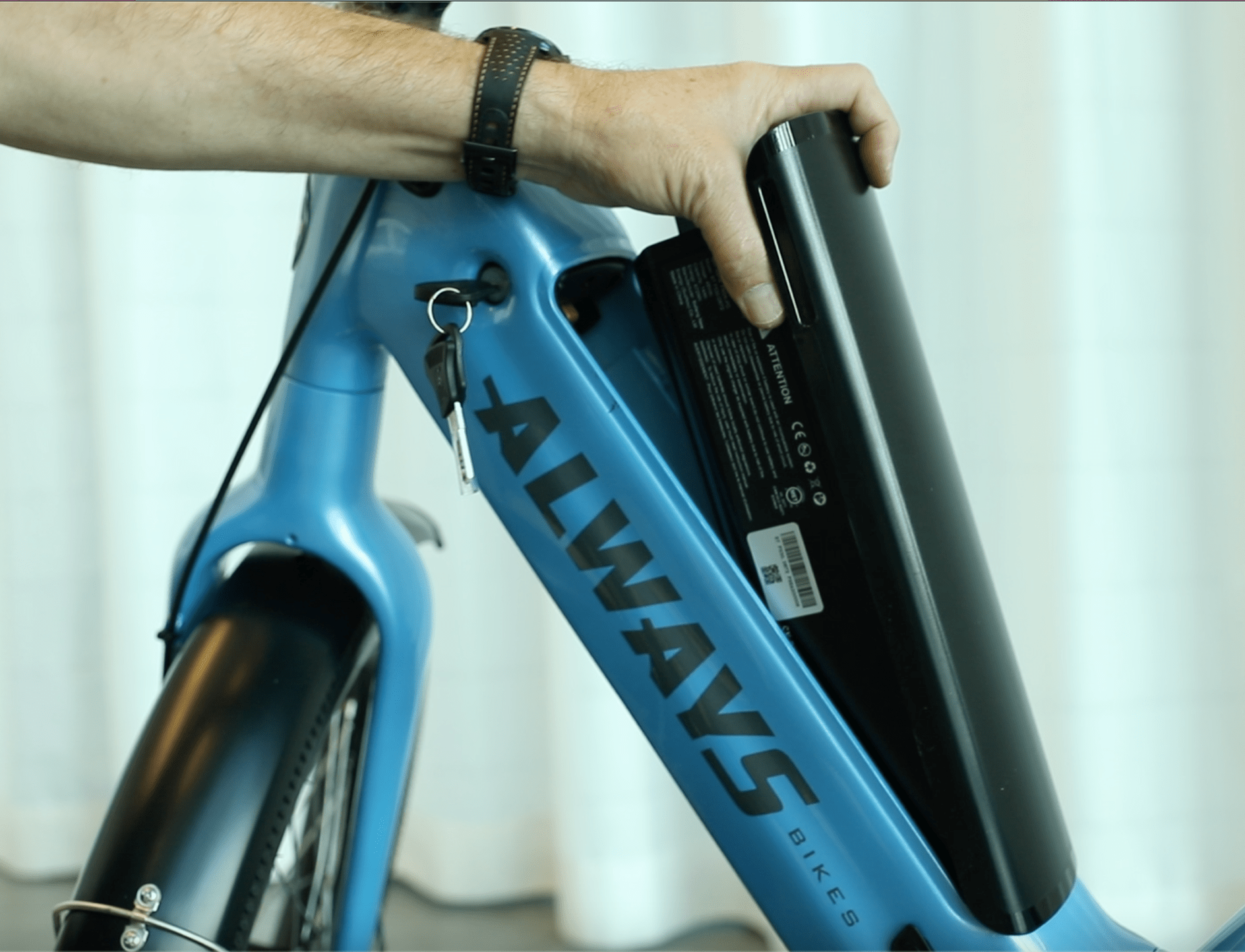NEW TO ELECTRIC BIKES?
We have compiled valuable information to enhance your understanding of e-bikes and assist you in finding the ideal one that perfectly suits your needs.
A NEW WAY TO RIDE
Electric bikes, or e-bikes as they're commonly called, are like the superheroes of cycling, packed with loads of perks compared to regular bikes. But what's even cooler is how they come to the rescue when you need to zip around within a mile of your place, giving you a better alternative for short trips. So, let's dive in and see how e-bikes not only make your rides more awesome but also make those short trips way more fun and eco-friendly.
WHAT IS AN ELECTRIC BIKE?
An e-bike, is a bicycle equipped with an integrated electric motor and a rechargeable battery. These components work together to give you electric assistance when pedaling. E-bikes are available in various configurations, including mountain bikes, road bikes, and urban commuter models. The electric motor can augment your pedaling efforts, making it easier to conquer challenging terrain, cover longer distances, or maintain a consistent pace. E-bikes represent an eco-friendly and practical mode of transportation that blends the advantages of traditional cycling with the convenience of electric support.
THE ANATOMY OF AN ELECTRIC BIKE

DISPLAY & CONTROLLER
The display and controller form an essential part of an e-bike's electrical system. It helps to deliver optimal power delivery and provide the rider with valuable information to get the most out of their ride.
The controller is the "brain" of an e-bike. It monitors various factors, such as pedal cadence, torque, and speed, to provide optimal power assistance.
The display is the user interface for the e-bike, providing riders with information about the bike's performance. It typically displays data such as speed, battery level, and power output. The display allows riders to adjust power settings and other preferences, customizing their riding experience.
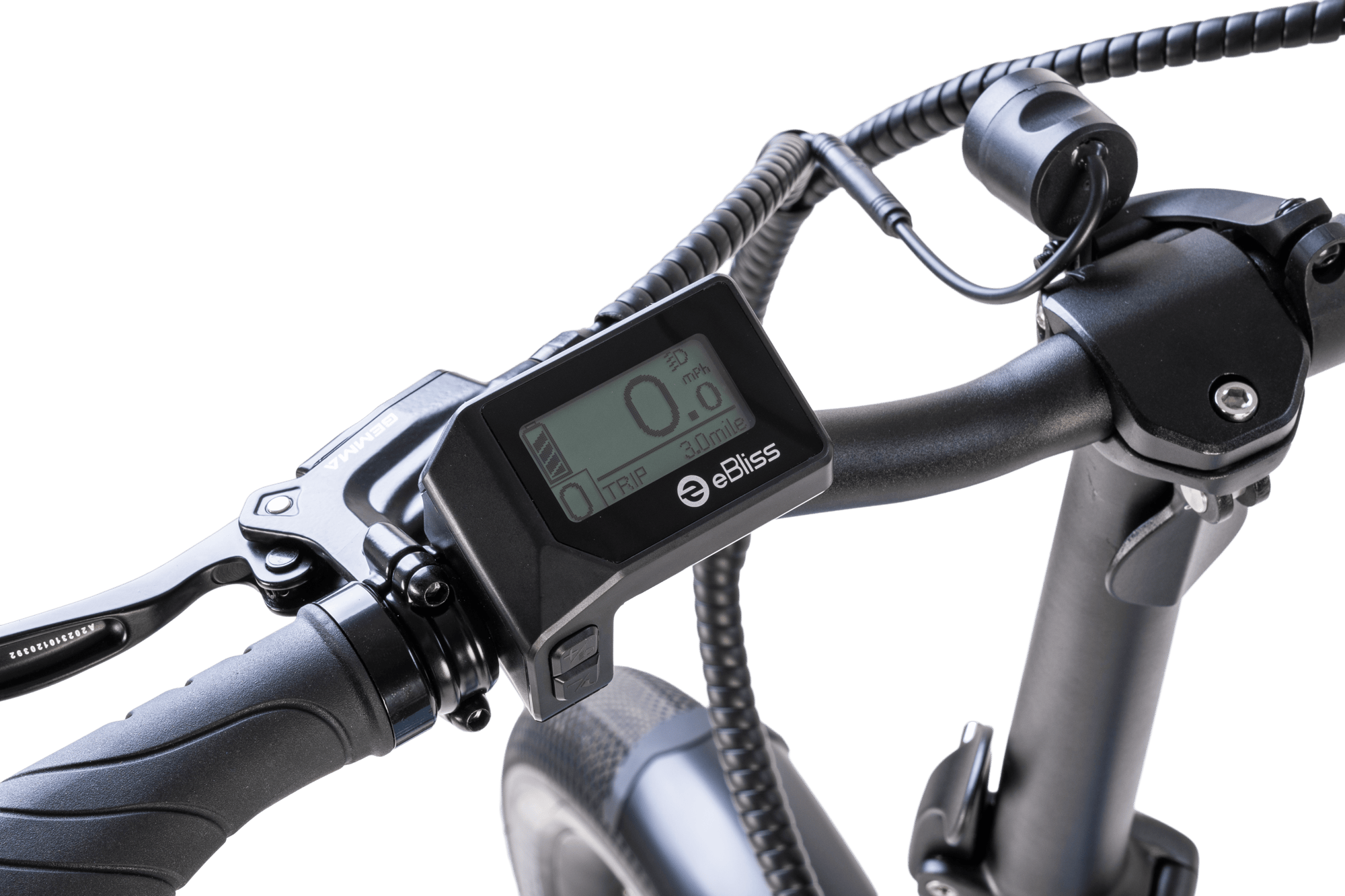
Mid-drive A mid-drive motor is mounted directly onto the frame, between the pedals. This placement provides a more natural and responsive riding experience compared to hub-mounted motors. Mid -drive motors are typically more powerful and efficient than hub motors, but they are also more expensive.

Rear Wheel Hub-Drive A hub-drive motor is a type of electric bicycle motor that is mounted directly into the rear wheel hub, providing a simple and efficient way to add electric assistance to a bicycle. Hub drive motors are relatively affordable, making them a popular choice.
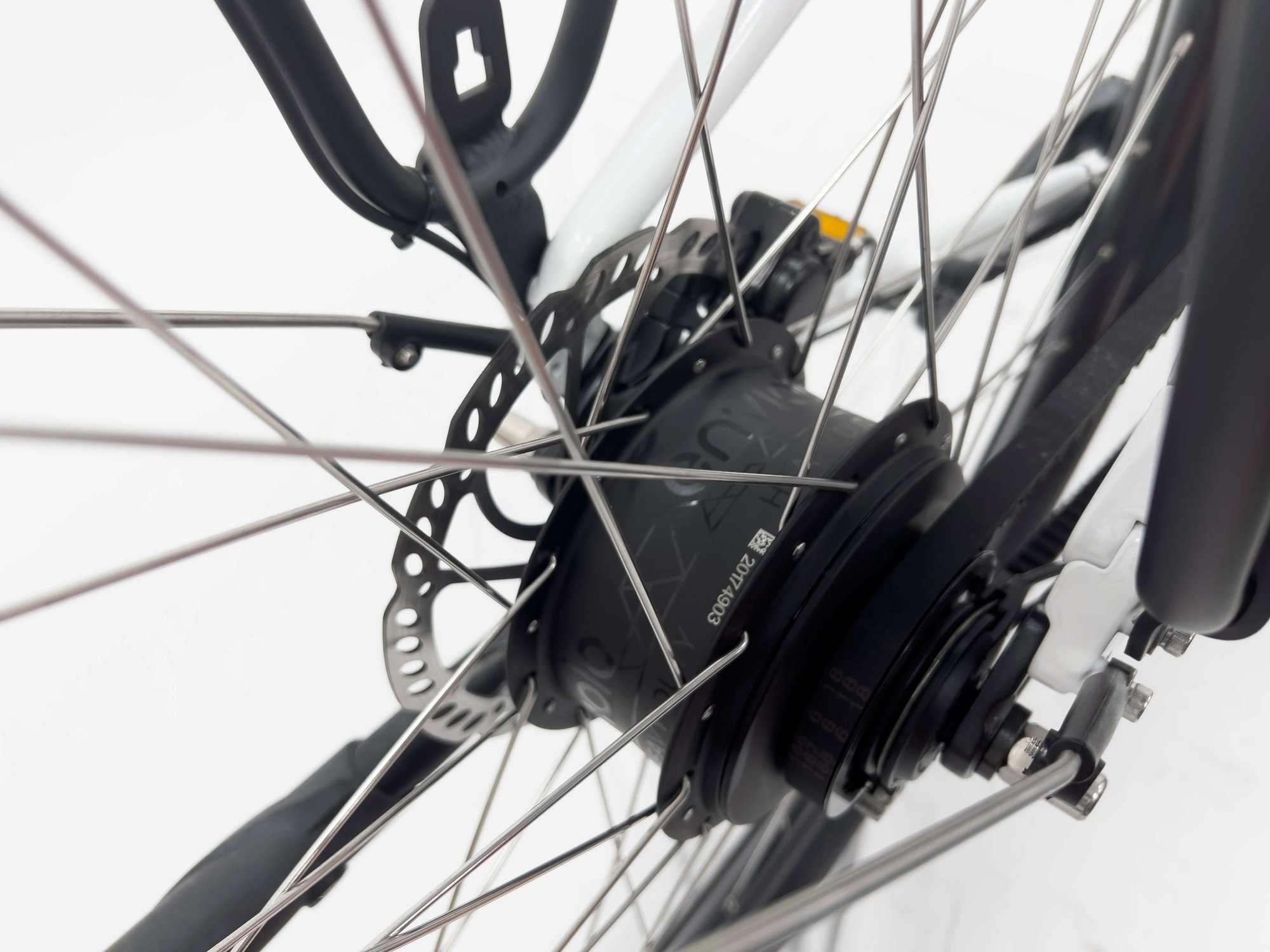
Bike Frame An e-bike frame is the foundation of an electric bicycle, determining the bike's handling and performance characteristics. E-bike bike frames are typically made from lightweight yet durable materials like aluminum, steel, or carbon fiber, and they come in a variety of styles to suit different riding styles and terrain.
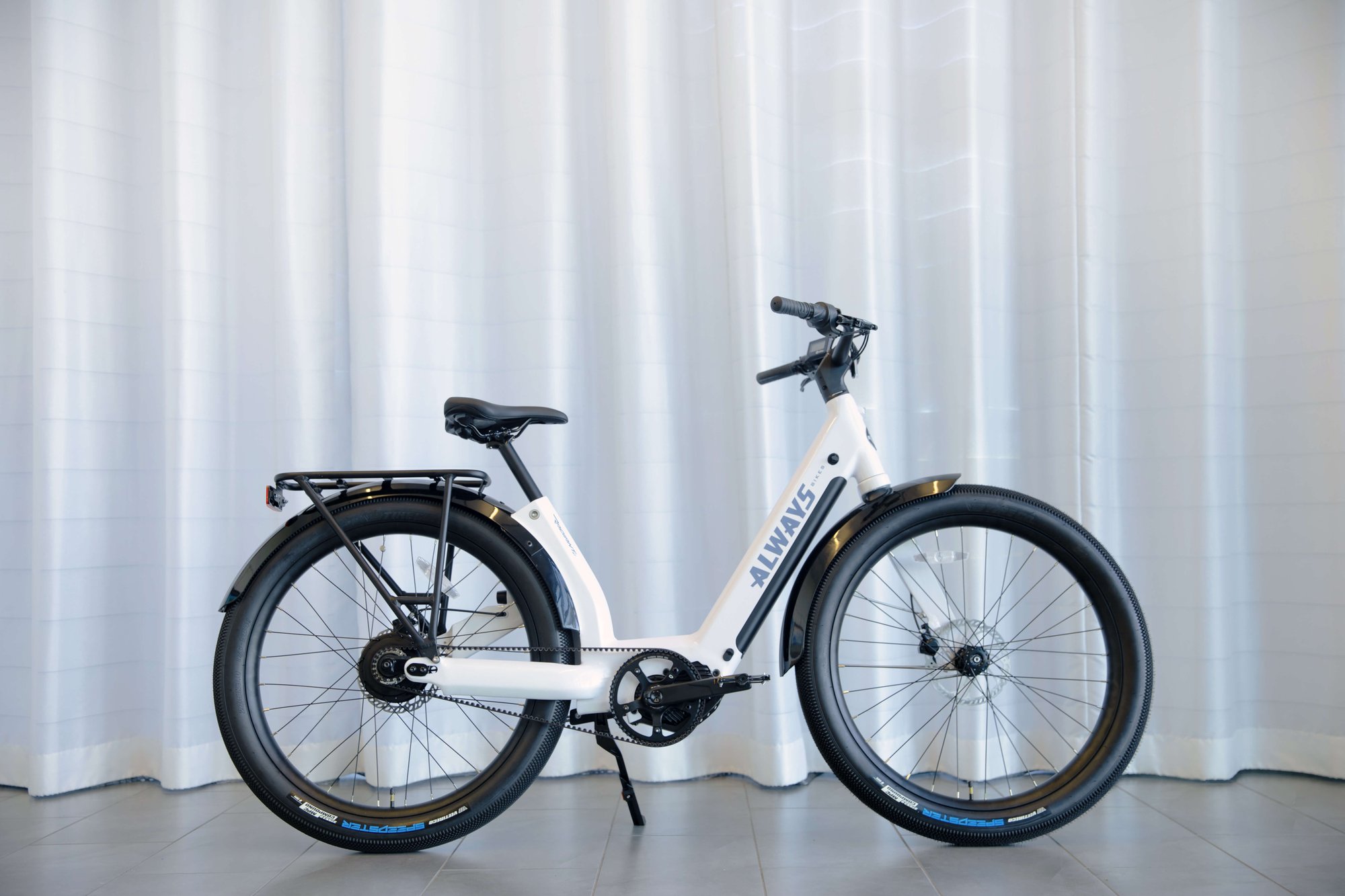
TERMS AND WHAT THEY MEAN
Measured in watts (W), indicating the motor's output power. Typical e-bike motors range from 250W to 750W, with higher power providing more assistance.
Measured in watt-hours (Wh), indicating the amount of energy stored in the battery. Higher capacity batteries provide more range.
The distance an e-bike can travel on a single charge, influenced by motor power, battery capacity, riding style, and terrain.
The rate at which a rider rotates the pedals, measured in revolutions per minute (RPM). Optimal cadence varies depending on factors like fitness level, terrain, and riding style.
The mechanism that controls the motor's assistance based on the rider's pedaling effort. Common PAS systems include cadence-based and torque-based systems.
Consisting of the motor, transmission, and associated components. The drive train is responsible for determining the performance, range, and overall riding experience of the e-bike.
The rotational force applied to the pedals, measured in Newton-meters (Nm). Torque is primarily determined by the motor and the drivetrain. A higher-powered motor will generally provide more torque, while a well-tuned drivetrain will efficiently transfer that torque to the rear wheel.
Refers to a complete discharge and recharge of the battery. This cycle represents the primary wear-and-tear factor on e-bike batteries. Over time, repeated charge cycles gradually reduce the battery's ability to store and deliver energy. Typical e-bike batteries have a lifespan of 500 to 1000 charge cycles.
ELECTRIC BIKE CLASSES
E-bike classes are a system of categorization that distinguishes e-bikes based on their power output and speed limitations. This classification system helps ensure that e-bikes are used safely and responsibly, in accordance with local regulations and road safety guidelines.
CLASS 1 E-BIKES
These e-bikes have a maximum motor power of 250 watts and a maximum assisted speed of 20 mph. They are pedal-assist only, meaning the motor provides assistance when the rider is pedaling. Class 1 e-bikes are considered the most beginner-friendly and are often allowed on bike paths and lanes alongside traditional bicycles.
CLASS 2 E-BIKES
These e-bikes have a maximum motor power of 750 watts and a maximum assisted speed of 20 mph. They can be pedal-assist or throttle-powered, meaning the motor can provide assistance without the rider pedaling. Class 2 e-bikes are typically more powerful and are often used for commuting or off-road riding.
CLASS 3 E-BIKES
These e-bikes have a maximum motor power of 750 watts and a maximum assisted speed of 28 mph. They are pedal-assist only and are typically considered the most powerful e-bikes available. Class 3 e-bikes are intended for experienced riders and are often used for commuting or recreational riding on roads.
DISCOVER YOUR IDEAL E-BIKE
From city streets to mountain trails, there's an e-bike perfectly suited to your riding style and terrain. Explore the diverse range of electric bikes and discover the one that matches your riding aspirations.

CITY AND COMMUTING E-BIKES
Experience the joy of effortless commuting and fitness with a city and commuting e-bike. Its powerful motor, comfortable riding position, and versatile performance make it an ideal choice for urban adventurers and fitness enthusiasts alike.
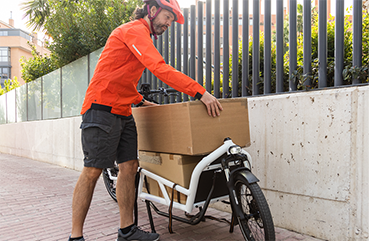
CARGO E-BIKES
Revolutionize your errands, commutes, and adventures. Cargo e-bikes, with their muscular frames and spacious platforms, are the ultimate utility vehicles on two wheels. Effortlessly hauling groceries, transporting tools, or even taking your kids on an adventure, all thanks to the powerful electric motor that takes the sting out of hills and long distances.

MOUNTAIN E-BIKES
Conquer rugged trails and explore hidden wilderness with the mountain e-bike, your trusty companion for off-road adventures. Its powerful motor, durable construction, and advanced suspension system empower you to tackle challenging terrain with confidence and control.


.png?width=2000&name=DSC00695%20(1).png)



